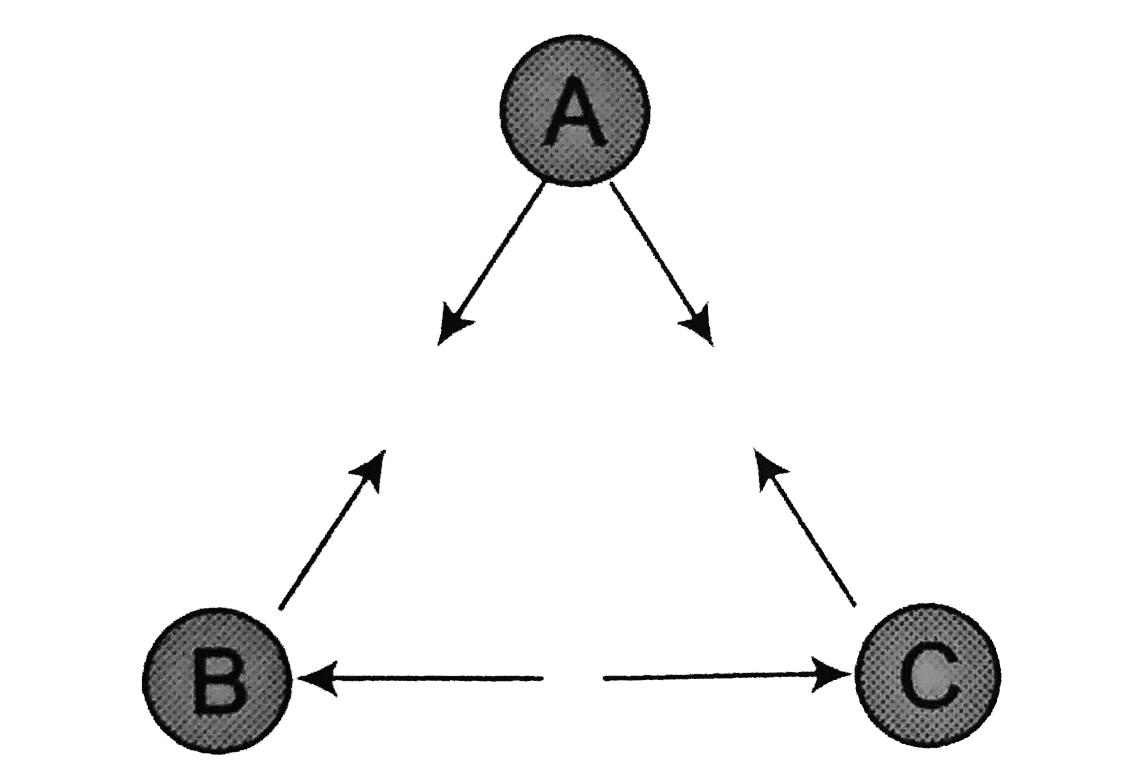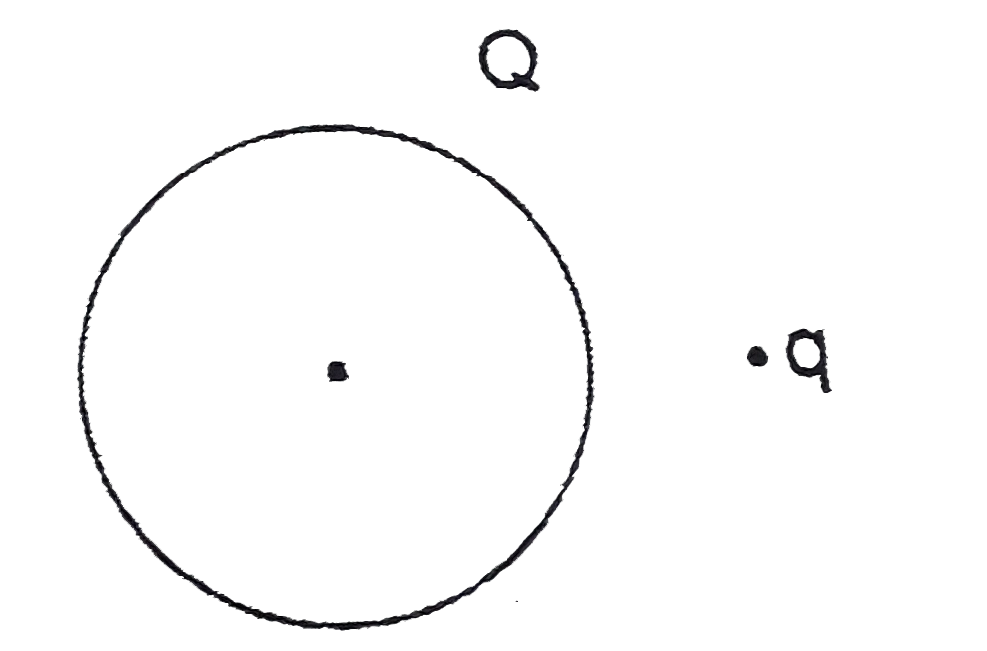The diagram shows the arrangement of three small uniformally charged spheres, A,B and C. The arrow indicate the direction of the electrostatic forces acting between the spheres (for example, the left arrow on sphere A indicates the electronstatic force on sphere A due to sphere B). At least two of the spheres are positively charged. Which sphere, if any, could be negatively charged?

sphere A
sphere B
sphere C
no sphere
The correct Answer is:A
It can be seen from the diagram that only the sphere B and sphere C repel. Hence they both must be of same type. According to the fact that at least two spheres are positively charged, therefore both spheres should be positively charged . Since attraction occurs for two remaining pairs it can be concluded that the sphere A is negatively charged.
Topper's Solved these Questions
Similar Questions
Figure shows a uniformly charged sphere of radius R and total charge Q. A point charge q is situated outside the sphere at a distance r from centre of sphere. Find out the following :
(i) Force acting on the point charge q due to the sphere.
(ii) Force acting on the sphere due to the point charge.
 View Solution
View SolutionThe electrostatic force on a small sphere of charge 0.4μC due to anther small sphere of charge −0.8μC in air 0.2 N (i) What is the distance between the two spheres? (ii) What is the force on the second sphere due to the first ?
View Solution
Knowledge Check
- Question 1 - Select One
The electric field between the two spheres of a charged spheres condenser
Ais zeroBis constantCincrease with distance from centreDdecrease with distance from centre - Question 2 - Select One
Three identical spheres, each having a charge q and radius R. are kept in such a way that each touches the other two. The magnitude of the electric force on any sphere due to the other two is
A14πε0(qR)2B√34πε0(qR)2C√316πε0(qR)2D√516πε0(qR)2 - Question 3 - Select One
Two spheres of radius a and b respectively are charged and joined by a wire. The ratio of electric field of the spheres is
Aa/bBb/aCa2/b2Db2/a
An insulating rod carries some net charge, and a copper sphere is neutral. The rod and the sphere do not touch. Can there be force of attration/repulsion between the two?
View SolutionThe eletrostaic force on a small sphere of charges 0.4μC due to another small sphere of charge 0.8μC in air 0.2 N.
What is the distance between the two spheres?
(b) What is the force on the second sphere due to the first?View SolutionThe electrostatic force on a small sphere of charege 0.4μC due to anther small sphere of charge −0.8μC in air 0.2 N (i) What is the distance between the two spheres? (ii) What is the force on the second sphere due to the first ?
View SolutionConsider three identical metal spheres A,B and C. Spheres A carres charge +6q carries no charge . Spheres A and B are touchd together and them separated. Sphere C is then touched to sphere A and separated from it . Finally the sphere C is touched to sphere B and separated from it . Find the final chage on the sphere C.
View SolutionThe electrostatic attracting froce on a small sphere of charge 0.2μC due to another small sphere of charge −0.4μC in air is 0.4N. The distance between the two spheres is
View Solution

